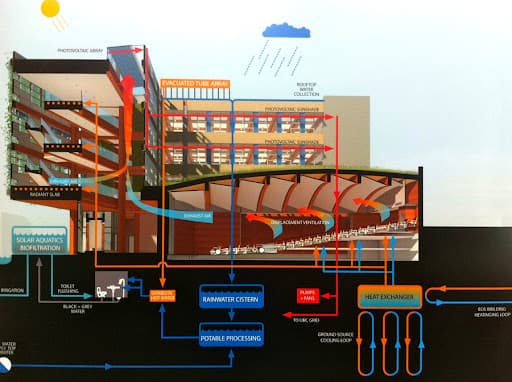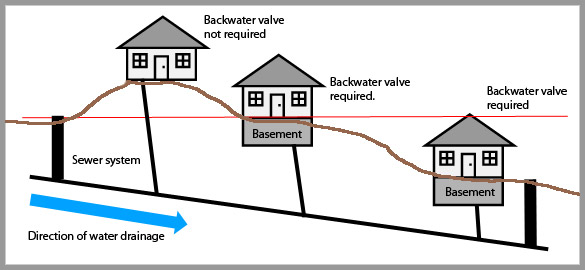The Complete Guide to Your House's Plumbing System Anatomy
The Complete Guide to Your House's Plumbing System Anatomy
Blog Article
They are making a few good annotation on Anatomy of a House: Understanding the Components in general in the article further down.

Understanding exactly how your home's plumbing system works is crucial for every single homeowner. From supplying clean water for drinking, food preparation, and showering to safely getting rid of wastewater, a properly maintained plumbing system is critical for your family's health and wellness and comfort. In this comprehensive guide, we'll explore the detailed network that comprises your home's plumbing and deal ideas on maintenance, upgrades, and handling typical issues.
Intro
Your home's plumbing system is greater than simply a network of pipelines; it's an intricate system that ensures you have accessibility to clean water and efficient wastewater elimination. Knowing its elements and how they collaborate can aid you protect against costly fixings and make certain everything runs efficiently.
Fundamental Elements of a Plumbing System
Pipelines and Tubing
At the heart of your pipes system are the pipes and tubes that carry water throughout your home. These can be made from different materials such as copper, PVC, or PEX, each with its benefits in terms of toughness and cost-effectiveness.
Fixtures: Sinks, Toilets, Showers, etc.
Fixtures like sinks, commodes, showers, and bathtubs are where water is made use of in your home. Comprehending exactly how these fixtures attach to the plumbing system assists in diagnosing issues and intending upgrades.
Valves and Shut-off Points
Shutoffs regulate the flow of water in your plumbing system. Shut-off shutoffs are essential during emergency situations or when you need to make repairs, enabling you to separate parts of the system without interfering with water circulation to the entire home.
Water Supply System
Main Water Line
The primary water line attaches your home to the metropolitan water supply or a private well. It's where water enters your home and is distributed to numerous fixtures.
Water Meter and Pressure Regulator
The water meter steps your water use, while a pressure regulatory authority ensures that water flows at a safe pressure throughout your home's plumbing system, avoiding damages to pipelines and fixtures.
Cold Water vs. Warm water Lines
Recognizing the distinction between cold water lines, which supply water directly from the main, and hot water lines, which bring heated water from the water heater, helps in fixing and preparing for upgrades.
Water drainage System
Drain Piping and Traps
Drain pipelines lug wastewater far from sinks, showers, and commodes to the sewage system or septic system. Catches protect against sewer gases from entering your home and also trap debris that might create obstructions.
Air flow Pipelines
Air flow pipelines permit air into the drainage system, avoiding suction that could slow water drainage and create traps to vacant. Proper air flow is essential for maintaining the stability of your pipes system.
Relevance of Appropriate Drainage
Guaranteeing correct water drainage stops backups and water damages. Regularly cleansing drains pipes and preserving traps can avoid pricey repair work and extend the life of your plumbing system.
Water Furnace
Sorts Of Water Heaters
Water heaters can be tankless or traditional tank-style. Tankless heating units heat water on demand, while tanks keep warmed water for prompt use.
How Water Heaters Attach to the Plumbing System
Understanding just how water heaters connect to both the cold water supply and warm water distribution lines aids in identifying concerns like inadequate hot water or leakages.
Maintenance Tips for Water Heaters
Regularly purging your water heater to get rid of sediment, inspecting the temperature setups, and examining for leaks can expand its life expectancy and boost energy performance.
Typical Pipes Problems
Leaks and Their Reasons
Leaks can happen due to maturing pipes, loose fittings, or high water stress. Dealing with leakages quickly protects against water damage and mold and mildew growth.
Obstructions and Blockages
Obstructions in drains and commodes are frequently caused by flushing non-flushable things or an accumulation of grease and hair. Making use of drain screens and bearing in mind what decreases your drains can stop obstructions.
Indications of Plumbing Issues to Expect
Low tide stress, slow-moving drains pipes, foul odors, or uncommonly high water expenses are signs of potential pipes issues that ought to be addressed immediately.
Plumbing Maintenance Tips
Normal Examinations and Checks
Schedule yearly plumbing assessments to catch issues early. Try to find indications of leaks, rust, or mineral buildup in faucets and showerheads.
Do It Yourself Maintenance Tasks
Basic jobs like cleaning tap aerators, looking for toilet leaks making use of dye tablet computers, or insulating revealed pipes in cold environments can protect against major plumbing concerns.
When to Call a Professional Plumbing Professional
Know when a plumbing issue calls for professional know-how. Trying intricate repairs without correct understanding can cause more damages and higher repair costs.
Upgrading Your Plumbing System
Reasons for Upgrading
Upgrading to water-efficient fixtures or replacing old pipes can improve water quality, reduce water bills, and increase the value of your home.
Modern Pipes Technologies and Their Advantages
Explore modern technologies like smart leak detectors, water-saving toilets, and energy-efficient water heaters that can conserve cash and lower environmental impact.
Expense Factors To Consider and ROI
Compute the ahead of time prices versus long-lasting cost savings when taking into consideration pipes upgrades. Many upgrades pay for themselves with minimized energy bills and fewer fixings.
Environmental Impact and Conservation
Water-Saving Fixtures and Home Appliances
Setting up low-flow taps, showerheads, and bathrooms can substantially decrease water usage without compromising performance.
Tips for Decreasing Water Usage
Simple habits like fixing leaks promptly, taking much shorter showers, and running complete lots of washing and recipes can save water and reduced your utility bills.
Eco-Friendly Plumbing Options
Consider lasting pipes materials like bamboo for flooring, which is durable and eco-friendly, or recycled glass for kitchen counters.
Emergency situation Preparedness
Actions to Take Throughout a Plumbing Emergency situation
Know where your shut-off shutoffs are located and just how to shut off the water in case of a burst pipeline or significant leak.
Relevance of Having Emergency Situation Calls Useful
Keep call info for neighborhood plumbings or emergency situation solutions readily available for fast action throughout a plumbing situation.
DIY Emergency Situation Fixes (When Suitable).
Short-lived fixes like utilizing air duct tape to patch a leaking pipeline or putting a bucket under a trickling tap can decrease damages up until a professional plumbing professional shows up.
Conclusion.
Recognizing the composition of your home's plumbing system empowers you to keep it successfully, saving money and time on repair work. By adhering to regular upkeep regimens and remaining notified concerning modern-day pipes innovations, you can ensure your plumbing system operates efficiently for many years to come.
HOW YOUR PLUMBING SYSTEM WORKS
Which Pipes Do What?
Blue lines = fresh water supply entering the building
Red lines = hot water supply entering the building
Grey lines = pipes carrying waste away from the building and venting pipes carrying gases away from the building (through the roof)
YOUR MAIN PLUMBING SYSTEMS
There are two main plumbing systems that support your home s basic plumbing needs one that brings clean water into your home, and one that sends dirty water away from your home. Connected to the toilet, bath, shower, and other faucets in your home, these two systems keep your water flowing in the right directions.
ACCESSING FRESH WATER
Fresh and clean water is brought into your home through the main water supply line . Filtered through one pipe, this water is pressured to flow into the various fixtures in your home at any given time.
This water can be sourced from a well located on your property, a pond or river (mostly cottages), or, as in most cases, from the city s municipal water treatment centre. However, it is important to note that water that is untreated, such as the water siphoned from ponds or rivers, may not be safe to drink. Personal water supplies always need to be treated for hardness and contaminants before consumed.
MUNICIPAL WATER SUPPLIES
Improve taste and odour
Remove sediment
Eliminate hardness
Reduce chlorine
COLD WATER SUPPLY VS. HOT WATER SUPPLY
Cold water flows into your home or building through the service line, which then distributes hot or cold water to your fixtures. This line is most commonly run through a central column that runs floor to floor. Hot water runs in short and straight pipes as the longer the pipeline, the more heat that will be lost in the transfer. Having shorter pipes also allows residents to access hot water more quickly.
WASTE WATER SYSTEM
Your wastewater system is divided into two parts pipes that send wastewater away from your home and venting pipes that send sewer gas away from your home. Sewage water travels through pipes that flush the water and waste towards local sewers that are operated and managed by your city or town. Most sewer systems rely on gravity to move the wastewater to where it needs to go.
The further away from your toilet or sink, the larger wastewater pipes become. This allows for waste to be disposed of from various parts of your home or business at once without pipe blockages. The angle and flow of these pipes are also essential for keeping your waste pipes clear of build up.
https://harrisplumbing.ca/how-your-home-plumbing-system-works/

HOW YOUR PLUMBING SYSTEM WORKS
Which Pipes Do What?
YOUR MAIN PLUMBING SYSTEMS
There are two main plumbing systems that support your home s basic plumbing needs one that brings clean water into your home, and one that sends dirty water away from your home. Connected to the toilet, bath, shower, and other faucets in your home, these two systems keep your water flowing in the right directions.
ACCESSING FRESH WATER
Fresh and clean water is brought into your home through the main water supply line . Filtered through one pipe, this water is pressured to flow into the various fixtures in your home at any given time.
This water can be sourced from a well located on your property, a pond or river (mostly cottages), or, as in most cases, from the city s municipal water treatment centre. However, it is important to note that water that is untreated, such as the water siphoned from ponds or rivers, may not be safe to drink. Personal water supplies always need to be treated for hardness and contaminants before consumed.
MUNICIPAL WATER SUPPLIES
COLD WATER SUPPLY VS. HOT WATER SUPPLY
Cold water flows into your home or building through the service line, which then distributes hot or cold water to your fixtures. This line is most commonly run through a central column that runs floor to floor. Hot water runs in short and straight pipes as the longer the pipeline, the more heat that will be lost in the transfer. Having shorter pipes also allows residents to access hot water more quickly.
WASTE WATER SYSTEM
Your wastewater system is divided into two parts pipes that send wastewater away from your home and venting pipes that send sewer gas away from your home. Sewage water travels through pipes that flush the water and waste towards local sewers that are operated and managed by your city or town. Most sewer systems rely on gravity to move the wastewater to where it needs to go.
The further away from your toilet or sink, the larger wastewater pipes become. This allows for waste to be disposed of from various parts of your home or business at once without pipe blockages. The angle and flow of these pipes are also essential for keeping your waste pipes clear of build up.
https://harrisplumbing.ca/how-your-home-plumbing-system-works/
We had been shown that article about from a good friend on our other blog. Appreciated our review? Please quickly share it. Let other people find it. Thank you so much for going through it.
Free Estimate Report this page